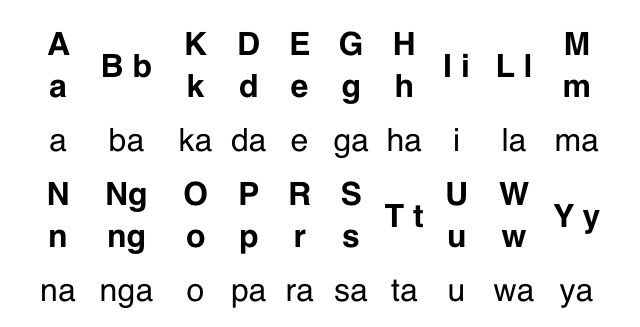

Usual diacritic marks are acute ( ´ ), grave ( ` ), circumflex ( ˆ ), diaeresis ( ¨ ) which are optional, and only used with the vowels.C, F, J, Ñ, Q, V, X, and Z are used mostly for loanwords, regional words and proper nouns.It is only used for words of foreign origin that have not been assimilated into Filipino or Filipino words which were written using Spanish orthography. When unstressed, /u/ is usually pronounced It is /r/ when used as initial consonant in clusters -rd, -rk, -rt,-rn, etc. ɾ/ and /d/ are sometimes interchangeable. Written as the digraph kw or trigraph kuw in Abakada. o/ may be pronounced, and tends to become in stressed positions Note its similarity with the word 'ng' (originally 'ng̃' with a tilde over the g), which is a prepositional word that is pronounced 'nang'. Pronounced 'ng' as in si ng, runni ng, etc. It is only used for words of Spanish origin that have not been assimilated into Filipino or Filipino words which were written using Spanish orthography. Written as the digraph ny or trigraph niy in Abakada. k/ has a tendency to become between vowels The sound varies depending on the language. Written as the digraph dy or trigraph diy in Abakada when using the /dʒ/ phoneme or as h when using the /h/ phoneme. i/ is usually pronounced in unstressed positions Many speakers (particularly in Luzon) pronounce the name of the letter H as "ets" /ɛtʃ/. ɾ/ and /d/ are sometimes interchangeable Substituted by the letters k or s or digraph ts in Abakada, depending on the sound the letter generates. The modern Filipino alphabet introduced since 1987 consists of 28 letters.

In 2013, the Komisyon sa Wikang Filipino released the Ortograpiyang Pambansa (“National Orthography”), a new set of guidelines for writing the Filipino language. For the distinction between, / / and ⟨ ⟩, see IPA § Brackets and transcription delimiters.įilipino orthography ( Filipino: Ortograpiyang Filipino) specifies the correct use of the writing system of the Filipino language, the national and co- official language of the Philippines. For an introductory guide on IPA symbols, see Help:IPA. This article contains phonetic transcriptions in the International Phonetic Alphabet (IPA).


 0 kommentar(er)
0 kommentar(er)
